Prelude to plantation: Sir Cahir O’Doherty’s rebellion in 1608
Published in Early Modern History (1500–1700), Features, General, Issue 6 (Nov/Dec 2009), Plantation of Ireland, Volume 17
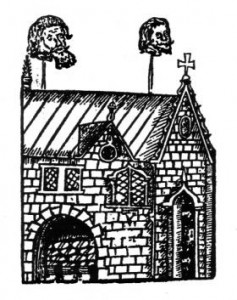
Contemporary woodcut of ‘Sir Carey Adoughertie, who murdered Sir George Paulet in Ireland; and for his rebellion hath his head now standing over Newgate in Dublin’.
Sir Cahir O’Doherty’s short-lived rebellion in 1608 took almost everyone by surprise. He had shown himself to be a very willing collaborator with the English Crown in the decisive phase of the Nine Years’ War (1594–1603) and afterwards. Yet O’Doherty was driven to conclude that his earnest efforts to integrate himself into the Stuart dominions were futile. The experiences of this loyalist-turned-rebel were symptomatic of the tremendous difficulties encountered by Irish Catholic lords in trying to reach an accommodation with the Crown and its officials in the early seventeenth century.
Spaniards and English
In September 1588 the ship La Trinidad Valencera sank in Kinnego Bay, on the north coast of Inishowen. It had been part of the great Armada sent by Philip II of Spain to conquer England. (The wreckage of the ship was rediscovered in 1971, and many of the artefacts recovered are now displayed in Derry’s Tower Museum.) The landing in his lordship of Don Alonso de Luzon at the head of 500 Spaniards posed a grave dilemma for Sir John O’Doherty (as he now styled himself): he was supposed to support the English against their Spanish foes, but Redmond O’Gallagher, bishop of Derry, had been campaigning zealously for Spanish support to win Irish freedom from the English and he persuaded O’Doherty to succour the Spanish survivors.
Sir John O’Doherty temporised. He discreetly made contact with Don Alonso and provided relief to the Spaniards. At the same time he sent news of the Spaniards’ arrival to the English. O’Doherty devised a plan whereby the Spaniards would give the appearance of having wrested possession of one of his castles from him. The Spaniards, however, proved to be no match for a smaller force of English soldiers. Don Alonso quickly surrendered, only to have the vast majority of his men disarmed, stripped and executed. For his part in the episode Sir John O’Doherty was lodged in a dungeon of Dublin Castle and only released two years later.
Sir John O’Doherty was a pragmatist, a man with no affection for the English or their queen but astute enough to weigh up political realities and act accordingly. He joined the Irish Confederates led by Hugh O’Neill, earl of Tyrone, and Red Hugh O’Donnell, lord of Tyrconnell, in the Nine Years’ War (1594–1603) against England very hesitantly, on the understanding that Spanish promises of massive support for the Confederates were on the verge of being realised. After several years of disappointment, however, Sir John sent signals to the English to indicate that he was willing to be a loyal subject of the queen if she could shield him from his powerful overlord, Red Hugh O’Donnell. English military tacticians were already conscious of the strategic value of Inishowen for their war against the Irish Confederates.
Cahir’s collaboration
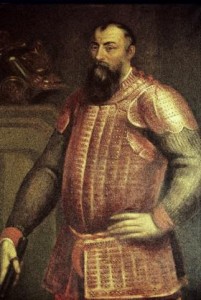
Right: Hugh O’Neill, earl of Tyrone—Cahir’s father, Sir John O’Doherty, joined his Irish Confederation in the Nine Years’ War (1594–1603) against England very hesitantly, on the understanding that Spanish promises of massive support for the Confederates were on the verge of being realised. (Lord Dunsany)
Sir John O’Doherty’s death in January 1601 left his thirteen-year-old son, Cahir, as his heir under English rule. Red Hugh O’Donnell, however, sponsored the appointment of Felim O’Doherty, a half-brother of Sir John and an experienced soldier, as the lord of Inishowen. Cahir’s foster-brothers, Hugh Buí and Felim Riabhach McDevitt, would not accept O’Donnell’s choice. They convinced Dowcra to persuade the queen’s deputy and council in Dublin to confirm Cahir as the lord of Inishowen and assured them of his support against the Confederates.
Cahir’s decision to collaborate with the English was pragmatic: the Confederates were content to relegate him to obscurity in favour of an uncle who could lead the men of Inishowen into battle against the English, while the English, on the other hand, would make him a lord. For a young lad who had been reared in the expectation of becoming a lord the choice was easy. And there were political calculations that encouraged Cahir to collaborate. By 1600 it was very hard to keep believing that the Spaniards would keep their promise to send a large army to support the Irish against the English. It was becoming increasingly probable that the English would win the war.
The English military campaign in Ulster was murderous. The state papers contain countless reports of English soldiers killing large numbers of Irish ‘men, women and children’, burning their houses and foodstores, and either slaughtering or taking away their livestock. Sir Arthur Chichester, one of the leading English commanders in Ulster, boasted that he and his men ‘killed man, woman, child, horse, beast and whatsoever we found’. Lord Mountjoy, the queen’s deputy, had no qualms of conscience about the slaughter of the innocent: he observed that even the best Irish people were ‘in their nature little better than devils’.
Cahir became Dowcra’s protégé in Derry. He threw himself into this new role with relish. Not content with sporting fine English clothes and speaking English, Cahir supported the English army’s operations in the north-west with enthusiasm. Years later, in his memoirs, Dowcra admitted that without Cahir it would have been ‘utterly impossible that we could have made that sure and steady progress in the wars [against the Irish Confederates] that afterwards we did’. Cahir’s bravery in battle against the Confederates was acknowledged with a knighthood by Mountjoy, at Augher, Co. Tyrone, in 1602.
Once the Nine Years’ War finally ended in 1603, Sir Cahir O’Doherty accompanied Mountjoy to meet the new king of England, Scotland and Ireland, James Stuart. The king formally confirmed the young Irishman in his father’s title and lands. On returning to Ireland Sir Cahir married Mary Preston, a daughter of Viscount Gormanstown, one of the leading peers in the Pale. He became a justice of the peace and an alderman of Derry. His collaboration with the Crown was well rewarded.
Sir Cahir O’Doherty was content to be a loyal subject of the British Crown, but as an Irish Catholic with land his status was far more precarious than he realised. In 1606 Dowcra sold his position as governor of Derry to Sir George Paulett, an irascible character who had no respect for Irish people or Catholics. Paulett soon realised that his investment in Derry had been ill-advised and he looked greedily on O’Doherty’s vast estates. About the same time George Montgomery, the first Protestant bishop of Derry, Raphoe and Clogher, arrived in Derry and immediately coveted as much land as he could get his hands on. Within months Sir Cahir found himself sued by the bishop in the king’s court in Dublin for some valuable lands in Inishowen, and was given a telling lesson in the quality of British justice when the defendant was Irish and Catholic.
‘Flight of the Earls’
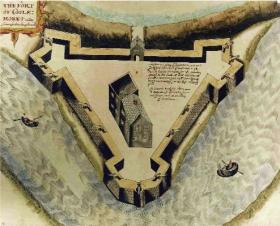
Culmore Fort—in April 1608 Sir Cahir and his men captured Culmore Castle with a ruse. He invited the commander, Captain Hart, and his wife to dine at Buncrana Castle and took them hostage. (Worshipful Company of Drapers of the City of London/James Stevens Curl)
The ‘Flight of the Earls’ in September 1607 left the English garrisons in the north of Ireland very jittery for fear of a Spanish-backed rebellion. Early in November 1607 Paulett learned of rumours that Sir Cahir was planning to rebel—which was most unlikely—and he tried to seize O’Doherty’s chief castle, at Burt. Sir Cahir met Sir Arthur Chichester, the king’s new deputy in Dublin, who insisted that the Irish lord provide sureties to guarantee his loyalty. Sir Cahir saw the demand as an affront to his record of service to the Crown and refused to do so, but he was imprisoned in Dublin Castle until he complied. It was a humiliating experience that revealed to O’Doherty something of the reality of his status as an Irish lord.
Nevertheless, Sir Cahir tried to strengthen his position within the British political establishment. He acted as the foreman of the jury that indicted the earls of Tyrone and Tyrconnell of treason for their flight from Ireland. Most audaciously, he applied to join the Prince of Wales’s household, an honorary position that would place him close to the British Crown and help him to protect his interests against covetous British officials in Ireland.
But early in April 1608 O’Doherty got into a violent argument with Paulett in Derry. Paulett was extremely arrogant towards O’Doherty, who insisted that ‘I think myself as good as you’. Paulett charged O’Doherty with treason and struck him. The Irish lord ‘would rather have suffered death than to live to brook such insult and dishonour, or defer or delay to take revenge for it’. It was the final straw for O’Doherty, by that stage very disillusioned with the reality of British rule, and drove him into rebellion.
Rebellion
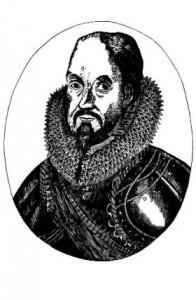
Sir Arthur Chichester (above) laid siege to O’Doherty’s chief castle at Burt (below) in June 1608. (State Paper Office, Kew)
There were two English garrisons by Inishowen, one in Derry and the other 8km further north at Culmore. Sir Cahir and his men captured Culmore Castle with a ruse. He invited the commander at Culmore, Captain Hart, and his wife to dine at Buncrana Castle on 18 April 1608. Then he used them as hostages to take possession of Culmore Castle and its large store of munitions.
Sir Cahir O’Doherty with about 100 men captured Derry on Tuesday 19 April 1608. Paulett, as one might expect, was killed straight away. Most of the British men in Derry ran for their lives, leaving many of their women to be captured, stripped naked and held prisoner by the rebels. A Lieutenant Baker marshalled between 120 and 140 men, women and children into two houses in the centre of the town, but with no hope of rescue, and ‘wearied with the lamentable outcry of women and children’, he negotiated with Sir Cahir, agreeing to surrender if the Irish lord would allow every British man to leave ‘with his sword and clothes, and likewise all women and children with their clothes’. Sir Cahir allowed Baker and his host to leave Derry, keeping only Bishop Montgomery’s wife and Mrs Paulett ‘with some others’ as hostages. The British settlement at Derry was ransacked and then razed to the ground, ‘leaving only chimneys and some stone walls standing’.
O’Doherty’s rebellion spread across north Donegal and reached as far east as Armagh, but Sir Cahir did not possess the charisma, authority or military strength needed to give his campaign any chance of success. A number of Irish lords—most notably Sir Niall Garbh O’Donnell, who had encouraged Sir Cahir to rebel, according to Lady Mary O’Doherty—supported the English against the rebels in the hope of some reward.
Chichester denounced Sir Cahir as ‘a beast’ for ‘detaining gentlewomen and suffering them to be stripped of their apparel and disgracefully used’. He sent troops north from Dublin and regained Derry on 20 May 1608, four weeks after its capture by O’Doherty. Once further reinforcements arrived, the English laid siege to O’Doherty’s chief castle at Burt. When the English began to bombard the castle, the defenders threatened to place Bishop Montgomery’s wife in any breach made in the castle walls, but the English retorted that the king’s honour was more important ‘than any woman in the world’. Lady O’Doherty surrendered, and we are told that the bishop’s wife was returned to her ‘owner’ on 1 July 1608. Four days later, on 5 July 1608, Sir Cahir O’Doherty was killed near Kilmacrennan while leading his men against a contingent of English and Irish soldiers marching towards Doe Castle, the last stronghold in rebel hands. With its leader dead, the rebellion was over.
Conclusion
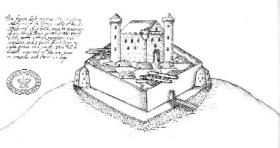 Sir Cahir O’Doherty’s rebellion was a pathetic affair that lasted only eleven weeks. He is, perhaps, most significant in historical terms as one of those Irish Catholic lords who was prepared to collaborate with the English/British Crown in the early years of the seventeenth century. Had he been treated differently he would never have gone into rebellion. Being Irish and being Catholic were grave liabilities, however, and O’Doherty was too proud to acquiesce in the inferior status that too many British officials accorded to the Irish generally. His rebellion was disastrous—and not only for his family, for it may have persuaded King James to embark on a comprehensive plantation of Ulster. HI
Sir Cahir O’Doherty’s rebellion was a pathetic affair that lasted only eleven weeks. He is, perhaps, most significant in historical terms as one of those Irish Catholic lords who was prepared to collaborate with the English/British Crown in the early years of the seventeenth century. Had he been treated differently he would never have gone into rebellion. Being Irish and being Catholic were grave liabilities, however, and O’Doherty was too proud to acquiesce in the inferior status that too many British officials accorded to the Irish generally. His rebellion was disastrous—and not only for his family, for it may have persuaded King James to embark on a comprehensive plantation of Ulster. HI
Henry A. Jefferies is the Head of History at Thornhill College, Derry, and Visiting Fellow in the Academy of Irish Cultural Heritages in the University of Ulster.
Further reading:
B. Bonner, That audacious traitor(Dublin, 1975).
H.A. Jefferies, ‘Hugh O’Neill, earl of Tyrone, c. 1550–1616’, in C. Dillon and H. A. Jefferies (eds), Tyrone: history and society (Dublin, 2000).
J. McCavitt, Sir Arthur Chichester: lord deputy of Ireland, 1605–16(Belfast, 1998).
J. McGurk, Sir Henry Dowcra, 1564–1631: Derry’s second founder (Dublin, 2005).
















